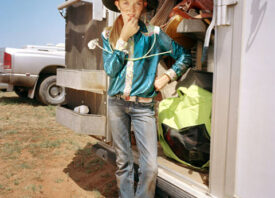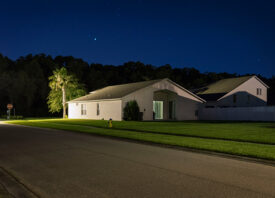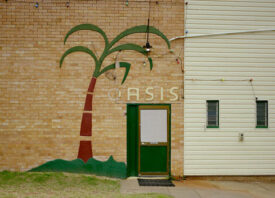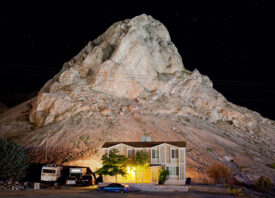Search this site
Clever Photos Document Property Lines in Suburban Landscape Design
“Where two plots of suburban land meet, a visual dialogue begins. This point of contact, on the property line, reveals communication between neighbors through landscape as an extension of the self,” says California-based photographer Roberta Neidigh about Property Line, a clever series in which she explores the boundaries we create, both intentional and not. She recently told us more about the project.
The Bechers gave the gift of the typology to photographers everywhere. And many photographers have photographed man-made landscapes with an eye for the odd detail. These are important strategies, but Property Line is a fresh take. How did you come up with this unusual idea for the series?
“I’d driven by many of these homes near my own for years, not really seeing them and their borders until I started exploring on foot. I discovered that we tend to edit out the property line when we observe suburban landscapes; we’re focused on our own space, mostly ignoring the place it intersects with another. Because of this, I’ve found great delight in discovering what goes mostly unseen despite being in plain sight.”
Your compositions are blocky, varied in texture and color; they look like abstract painting. Has your background in textile design helped you see these patterns and textures?
“My background in the fiber arts definitely influences how I see. The groomed, well cultivated landscapes I’m drawn to are made of careful arrangements of color, texture, and pattern. Where things get really interesting is when these patterns collide in the property line place. I think of the images as portraits—of place, community, and of the residents themselves.”
Where are these pictures taken?
“In Sacramento, California, all within 5 miles of the State Capitol, in middle and upper-middle class neighborhoods. I’ve focused on some of the early suburbs of the city, which were developed between the 1930s and 1970s. They were developed with a more concise footprint compared to the sprawling development that occurred later. Each of the neighborhoods has its own history and unspoken community standards of expression.”
These pictures seem to stay funny and surprising even after repeated viewing. Perhaps because there is a specific humanity expressed by an arrangement of garden hose, cactus or brick. Is this what you mean when you refer to “landscape as an extension of the self?”
“The public self we project in our own property is carefully cultivated, but we don’t spend nearly as much time considering how it touches our neighbor’s yard. We don’t really scrutinize the property line. By giving it less consideration, we allow for unexpected—and often humorous—interactions.”
Do you have any thoughts to share about abstractions like borders and property?
“The moment a line is drawn, tension is created. How can it be true that ‘Good fences make good neighbors?’”
This post was contributed by photographer Pelle Cass.












